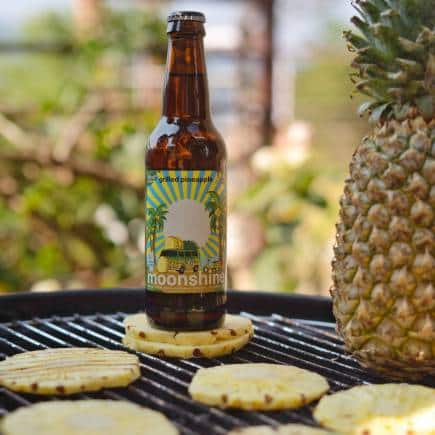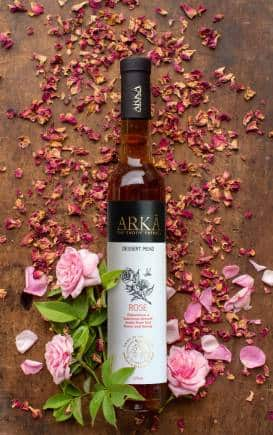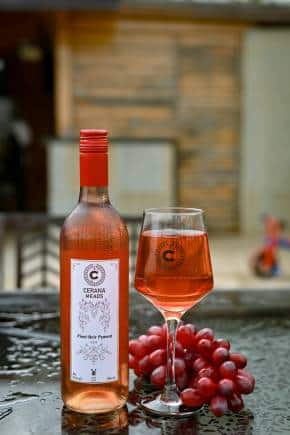From gisborneherald.co.nz
Family business Mead A’mour has invested about $100,000 to rebrand and expand its existing business of making wine and mead using East Coast honey.
The company was formed by Dennis and Kerry Greeks in August last year when Alchemy Beverages, a 16-year partnership between Mr Greeks and Barry Foster, and more recently a corporate manuka business, went into voluntary liquidation.
“For us it’s a chance to make a fresh start, give a new identity to the company and offer something that is unique,” said Mr Greeks.
Operating out of the same factory in the industrial subdivision, business under the new company name has started well — with 12,000 units of beverage sold in the first nine months of this year, up from 7000 units in all of 2020, and a number of growth opportunities coming on stream.
“We worked for a couple of months on changing the labels and getting our liqueur name the same brand name, ‘1st Night’, as our mead,” he said.
The research and development to create new label designs and make them industry compliant, with new company details for their alcoholic beverages, and print them, took an investment of around $8000.
They were now focused on building their stocks.
“One of the challenges at the moment is that bottle stores have taken a hit from Covid-19. With the stores being shut down for the best part of two or three months, it made a strain not only in the cash flow but also we were losing good customers,” he said.
One of Mead A’mour’s regular customers had to stop her purchases due to a rent increase imposed by her landlord because of the pandemic.
“A customer like that would regularly take products worth more than $2000 a month — for us, that is what we can use to pay our rent,” said Mr Greeks.
Prior to the August lockdown mead was making a resurgence, with sales through supermarkets showing good growth — which has helped them keep “ticking on” during the pandemic.
Mead A’mour products are sold in about 30 bottle stores, tourist shops and all Countdown supermarkets around the country.
“We are a niche market but we are also looking to start a process to get into the other supermarket chain run by Foodstuffs.
“We have also been talking with one of our customers who is a distributor in Auckland with 400 traditional liquor outlets,” he said.
Mead A’mour also exports its products, principally to Japan, China and Hong Kong. Last year it exported about two pallets, or 1320 units of beverage. This year Mr Greeks hoped to deliver about nine pallets to overseas customers.
The company also packages its beverages to overseas customer specifications in an OEM (original equipment manufacture) process.
“OEM is basically our recipe of wine and mead but somebody else’s label on it, to suit their market,” he said.
For example, a customer in Japan may like to have mead but the packaging doesn’t make much sense to them. To avoid such a scenario, distributing companies abroad send them their artwork, preferred design and labelling standards such as a pregnancy warning to suit the needs of their consumers.
Mr Greeks said the company was also working on expanding its beverage range to carbonated (non-alcoholic) drinks.
“We have done our research on our non-alcoholic drinks and sent out samples to who we think can be our key clients . . . and the feedback has been positive,” he said.
Huka Honey Hive in Taupo was one client that was “excited” about the expansion into carbonated drinks, saying they would anticipate ordering more than three pallets a year.
“If we do that, we will be launching just with two or three collectives (in nearby regions).”
With people being more health conscious around carbonated drinks, the company would use honey and fruits as natural sweeteners — so no added artificial flavours and low-calorie.
Mr Greeks said they had already done the R&D for the carbonated beverages “product formulation wise”, and could be looking to invest an additional $7000 on labels and packaging when the timing is right.
Another bonus with non-alcoholic beverages was that they did not need to pay excise tax.
“In a way it’s a chance for us to start small,” said Mr Greeks.
“If we were to do 10 pallets a year of the non-alcoholics, it would bring us another $10,000 worth of profitable turnover and that pays nearly half the rent for the year.”
Mr Greeks said this career started for him more than 20 years ago as a cider maker for Brian Shanks at Bulmer Harvest.
He later purchased the mead section of the business from Mr Shanks, partnering with honey supplier Barry Foster, who owned a honey factory. They incorporated Alchemy Beverages in 2005.
Mead A’mour co-founder Kerry Greeks is unable to work for the business due to injury.
“Kerry is passionate about the products and is great to bounce ideas off. She keeps me grounded, playing devil’s advocate with any business progression ideas.”
Mr Greeks now hopes to further expand his business by promoting Mead A’mour products for cocktails in bars, as well as reaching into more households as a delectable item.
“The next phase for us will be the upcoming launch of our new website www.meadamour.com as the platform to connect with our consumers and offer unique, great-tasting beverages and recipes for all to enjoy. The website will give everyone the opportunity to purchase our products throughout NZ, whether that’s by guiding consumers to their nearest stockist or via our online shop.”
https://www.gisborneherald.co.nz/business/20211207/honey-wine-mead-in-sweet-spot/













